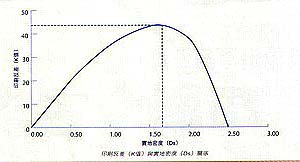For four-color printing, density in the field is an important factor affecting color reproduction. The density of the ground determines the ink ink layer thickness to a certain extent, and at the same time it also determines the enlargement of printed dots and the reproduction of the print. Under normal circumstances, the manuscript is rich in levels, such as photographs, and after being copied into print, the level will have some loss and compression. If the density in the field is too small, the level of reproduction capacity is lower, so the field density value should be increased to reduce the level of compression, thereby improving the ability to reproduce the tone; but if the field density value is too high, due to the ink layer is too thick, and The influence of printing pressure will cause the network points to expand too much, which will also cause the level to suffer losses. It is particularly difficult to lose some levels of shadows. Therefore controlling the density of the field is crucial for the reproduction of the entire tone.
However, different brands, different specifications of ink, printed on different substrates, the field density can be achieved are different, the dot expansion is also different. Therefore, in actual production, it is necessary to determine the best on-site density and appropriate dot gain values ​​for different substrates and different inks.
The method for determining the optimum solid density and dot gain using printing contrast is discussed here.
The print contrast or K value refers to the contrast between solid density and dark density (mainly 75% or 80% density). The greater the print contrast value, the more layers it can reproduce, and the richer the details of dark tone; conversely, the smaller the print contrast value, the less the level it can reproduce. Its calculation formula is:
K = (Ds - Dt)/Ds = 1 - Dt / Ds
In the formula, Ds is the density value in the field (it can include paper or minus paper density), Dt 峈 75% or 80% density value (it can include paper or minus paper density).
It can be seen from the formula that if the Ds value of a printed matter is as large as possible and the Dt value is as small as possible, the print contrast can be maximized.
Of course, if Ds and Dt are directly measured and then calculated, it is more tedious. Therefore, the general optical densitometer has the function of directly measuring the contrast of printing. The following is an example to analyze the relationship between printing contrast and solid density.
Print an ink on a certain coated paper, gradually increase the amount of ink, measured the printing contrast value of each ink amount, and simultaneously measure Ds and Dt. The results are as follows:
Field density
(Ds)
75% dot density
(Dt)
Print contrast
(K value)
description
0.00
0.00
0%
Not yet printed, blank sheet, contrast is 0
0.50
0.4
20%
Ink is not enough to show the entire tone level
1.00
0.65
35%
Increased ink volume, increased density in the field, increased contrast
1.50
0.82
43%
The amount of ink is further increased, the contrast value is further increased, and the level is fully displayed.
2.00
1.25
38%
Ink is too large, dot gains dominate, contrast decreases, and levels lose
2.5
2.5
0%
Ink is too large, Dt is close to Ds, resulting in a complete loss of dark tone level, the contrast is 0
The table data is plotted as a plot of "print contrast (K value) vs. solid density (Ds)".

It can be seen from the figure that when the solid density Ds=1.60, the printing contrast value is the largest (K=44%), so the optimal field density should be 1.60. The scores of subdivision points increased, and the dot gains at 25%, 50%, and 75% were divided into 8%, 18%, and 10%. When the density of the field Ds is less than 1.60, the reproducibility of the tone level is low. On the other hand, when the field density Ds > 1.60, the network tone of the dark tone causes the printing to decrease and the loss level.
Therefore, for this ink and this paper, the field density should be set to 1.60, and the dot gain at 25%, 50%, and 75% is divided into 8%, 18%, and 10%. At this point, the level of compression is at a minimum and the tone reproduction is highest.
The author of this article graduated from Beijing Institute of Graphic Communication and has eight years of working experience in the packaging and printing industry. He has conducted in-depth research on color quality management and ink color matching for packaging and printing.
Source: Longjiang Printing Network